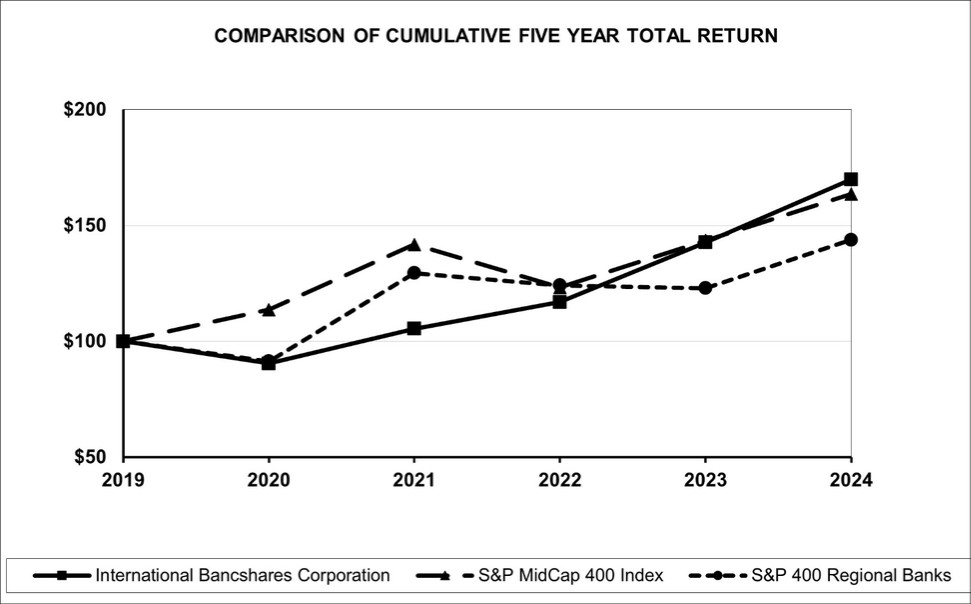changes. We and many other institutions rely primarily upon income simulation analysis in measuring and managing exposure to interest rate risk.
We have established guidelines for acceptable volatility of projected net interest income on the income simulation analysis and the guidelines are reviewed at least annually. As of December 31, 2024, in decreasing rate scenarios of -100, -200, -300 and -400 basis points and in rising rate scenarios of +100, +200, +300 and +400 basis points, the guidelines established by management require that the net interest income not vary by more than minus 15%, 15%, 15%, and 20%, respectively, for the first 12-month period projected. At December 31, 2024, the most recent income simulations show that a rate shift of -100, -200, -300, -400, +100, +200, +300 and +400 basis points in interest rates up will vary projected net interest income for the coming 12-month period by -3.51%, -6.57%, -9.22%, -11.67% +3.32%, +6.5%, +9.63% and +12.76%, respectively. The basis point shift in interest rates is a hypothetical rate scenario used to calibrate risk and does not necessarily represent management’s current view of future market developments. We believe that we are properly positioned for a potential interest rate increase or decrease.
All the measurements of risk described above are made based upon our business mix and interest rate exposures at the particular point in time. The exposure changes continuously as a result of our ongoing business and our risk management initiatives. While management believes these measures provide a meaningful representation of our interest rate sensitivity, they do not necessarily take into account all business developments that have an effect on net income, such as changes in credit quality or the size and composition of the statement of condition.
Our principal sources of liquidity and funding dividends from subsidiaries and borrowed funds, with such funds being used to finance our cash flow requirements. We closely monitor the dividend restrictions and availability from our Subsidiary Banks as disclosed in Note 18 of the Notes to Consolidated Financial Statements. At December 31, 2024, the aggregate amount legally available to be distributed to us from our Subsidiary Banks as dividends was approximately $1,440,000,000, assuming that each Subsidiary Bank continues to be classified as “well capitalized” under the applicable regulations in effect at December 31, 2024. The restricted capital (capital and surplus) of our Subsidiary Banks was approximately $1,454,738,000 as of December 31, 2024. The undivided profits of our Subsidiary Banks were approximately $1,998,355,000 as of December 31, 2024.
At December 31, 2024, we had outstanding $10,541,000 in other borrowed funds and $108,868,000 in junior subordinated deferrable interest debentures. In addition to borrowed funds and dividends, we have a number of other available alternatives to finance the growth of our Subsidiary Banks as well as future growth and expansion.
Capital
We maintain an adequate level of capital as a margin of safety for our depositors and shareholders. At December 31, 2024, shareholders’ equity was $2,796,707,000 compared to $2,447,774,000 at December 31, 2023, an increase of $348,933,000, or 14.3%. Shareholders’ equity increased primarily due to an increase in retained earnings. The accumulated other comprehensive loss is not included in the calculation of regulatory capital ratios.
Banks and bank holding companies are subject to various regulatory capital requirements administered by state and federal banking agencies. Capital adequacy guidelines and, additionally for banks, prompt corrective action regulations, involve quantitative measures of assets, liabilities, and certain off-balance sheet items calculated under regulatory accounting practices. Capital amount and classifications are also subject to qualitative judgements by regulators about components, risk-weighting and other factors.
The FRB has adopted risk-based capital guidelines which assign risk weightings to assets and off-balance sheet items. The guidelines also define and set minimum capital requirements (risk-based capital ratios). All banks are required to have Tier 1 capital of at least 4 % of risk-weighted assets and total capital of 8% of risk-weighted assets. Tier 1 capital consists principally of shareholders’ equity plus trust preferred securities issued and outstanding less goodwill and certain other intangibles, while total capital consists of Tier 1 capital, certain debt instruments and a portion of the reserve for loan losses. In order to be deemed well capitalized pursuant to the regulations, an institution must have a total risk-weighted capital ratio of 10%, a Tier 1 risk-weighted ratio of 8% and a Tier 1 leverage ratio of 5%. We had risk-weighted Tier 1 capital ratios of 23.06% and 22.39% and risk-weighted total capital ratios of 24.31% and 23.65% as of December 31, 2024
